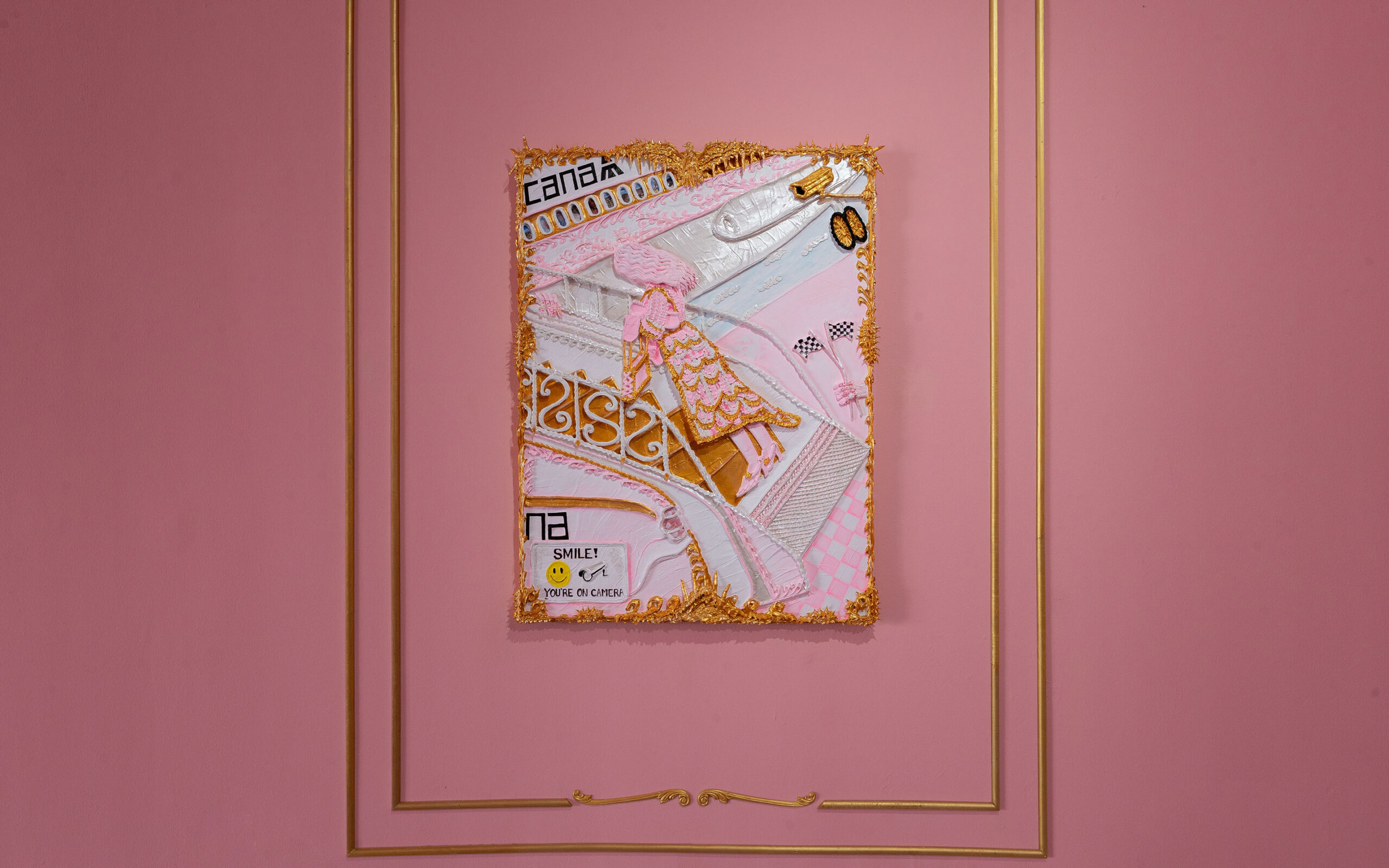
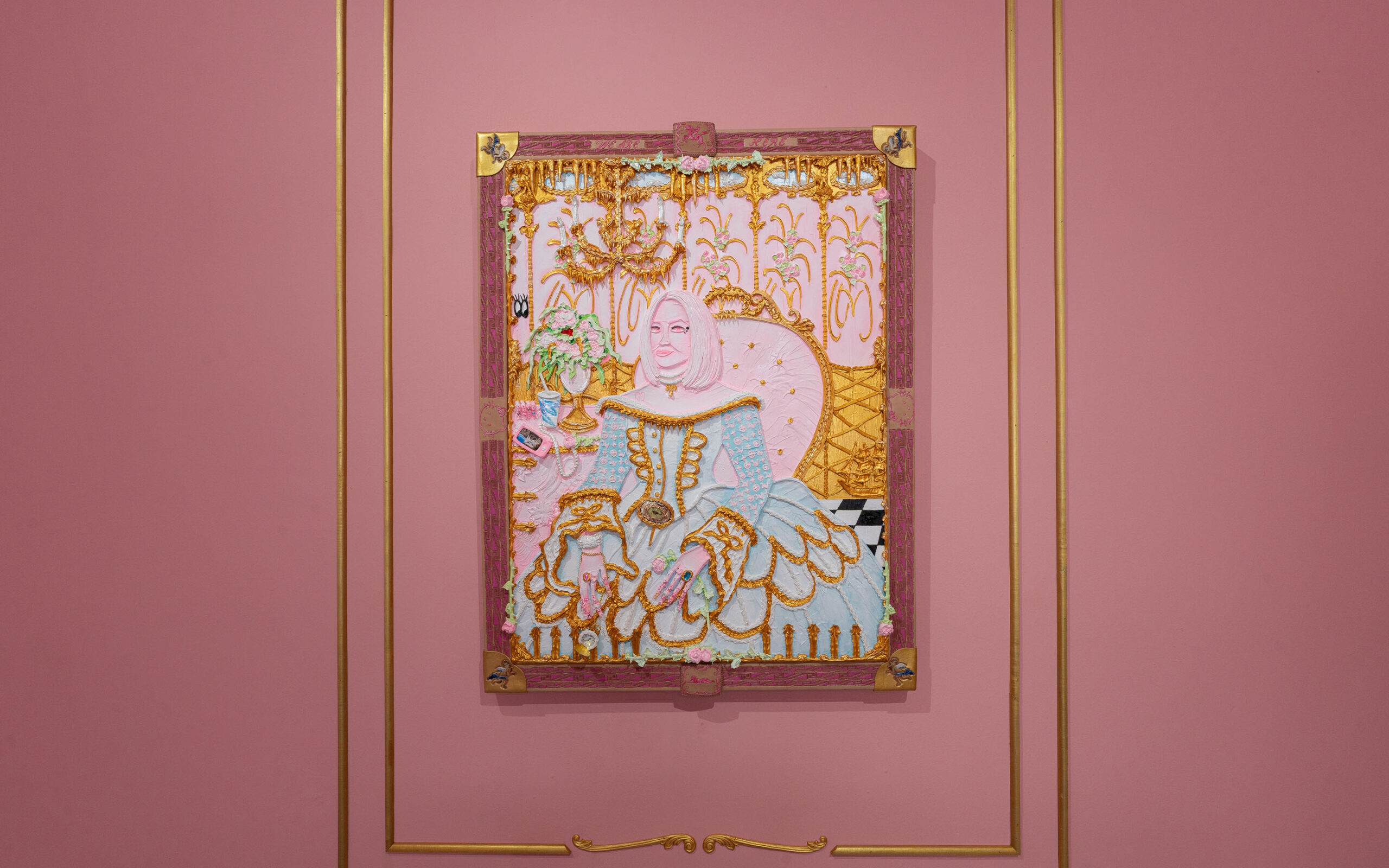
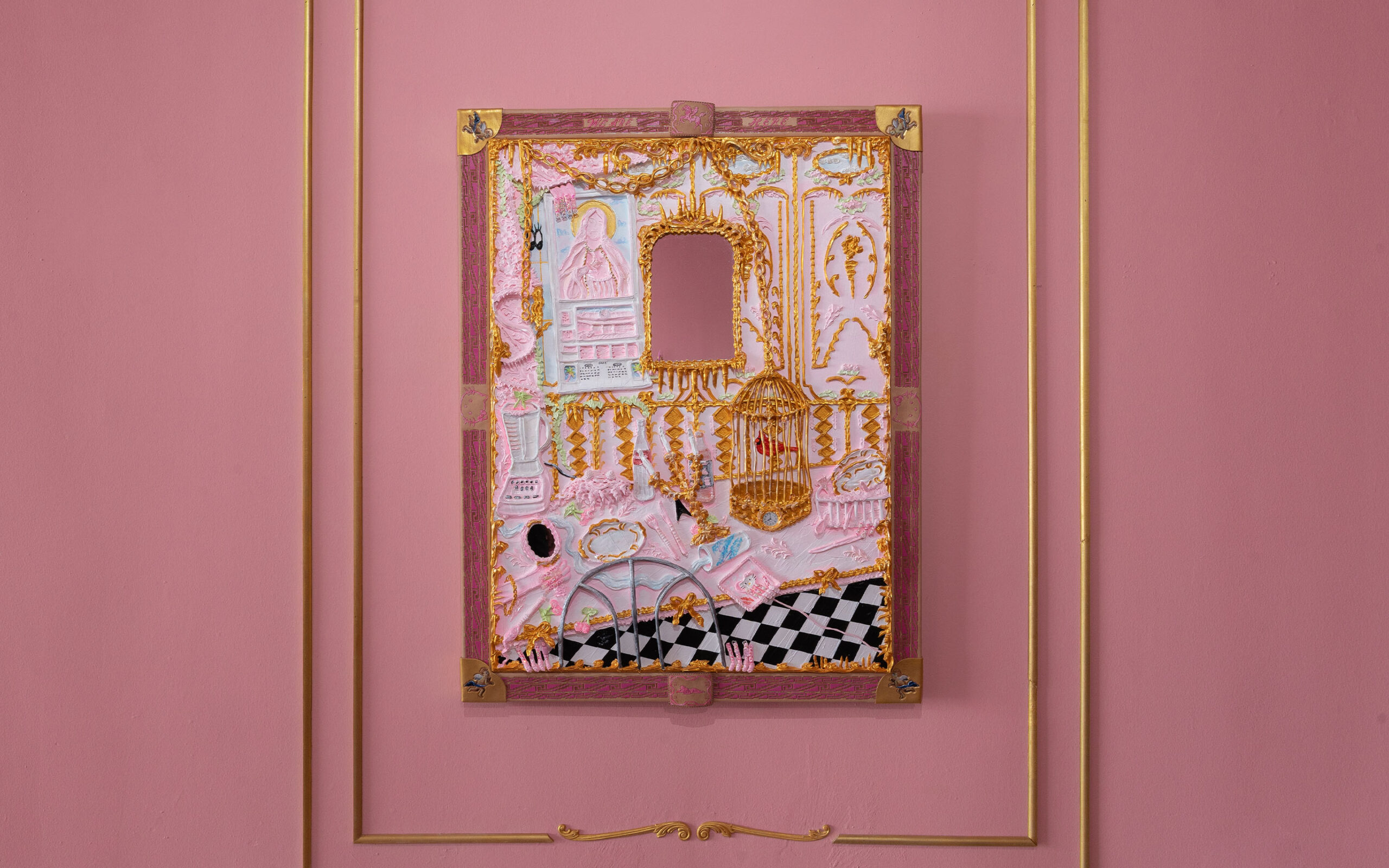
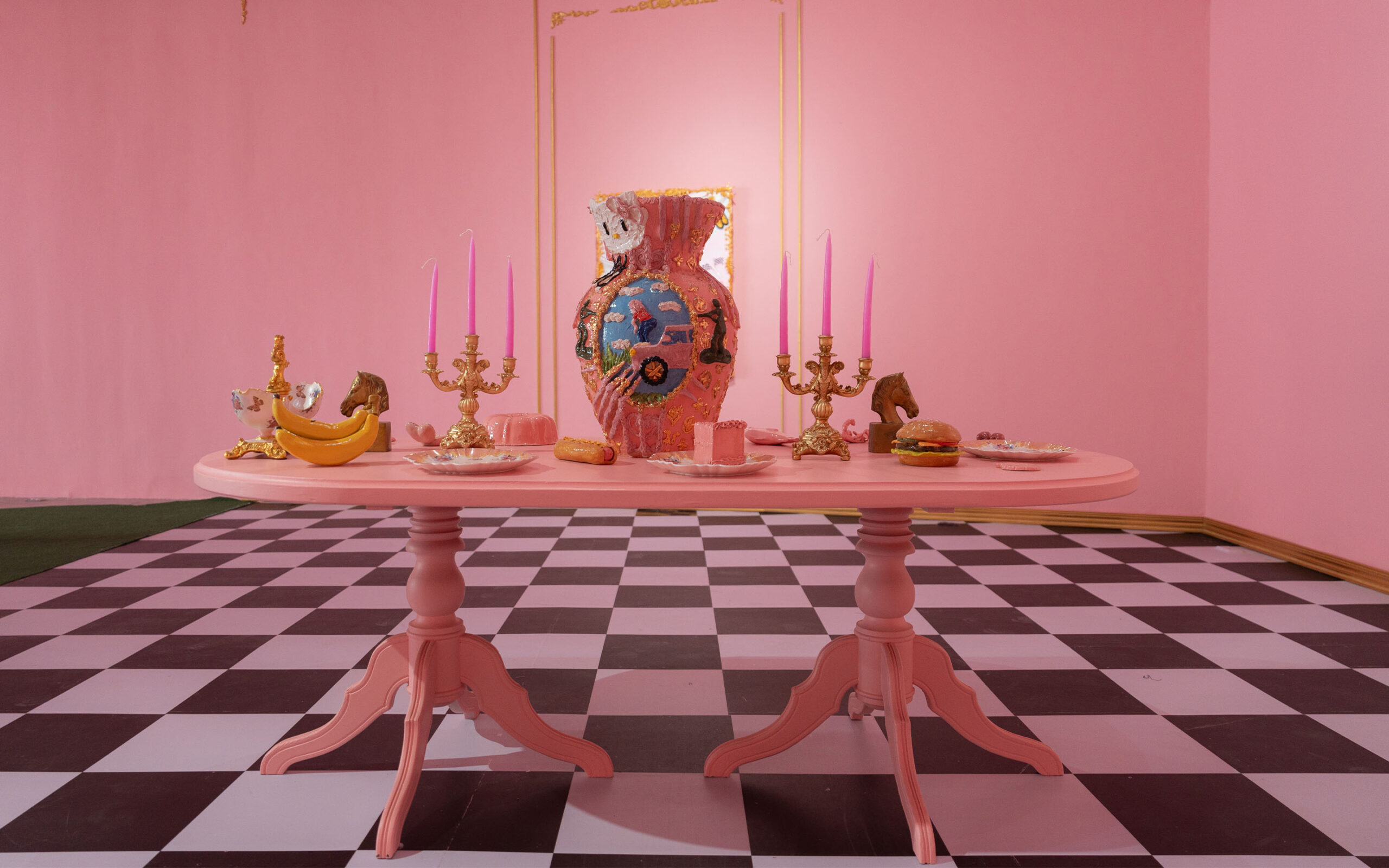
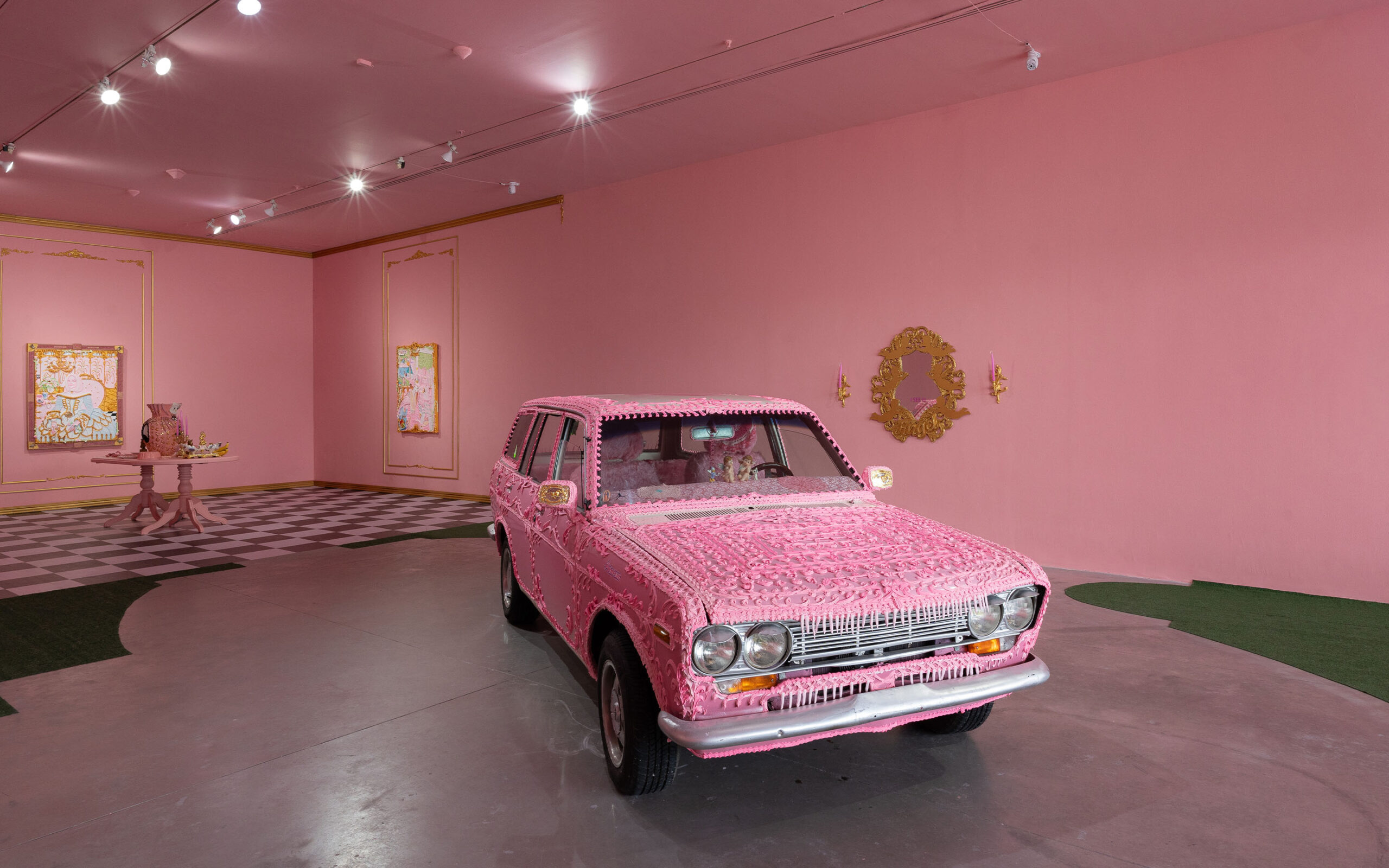
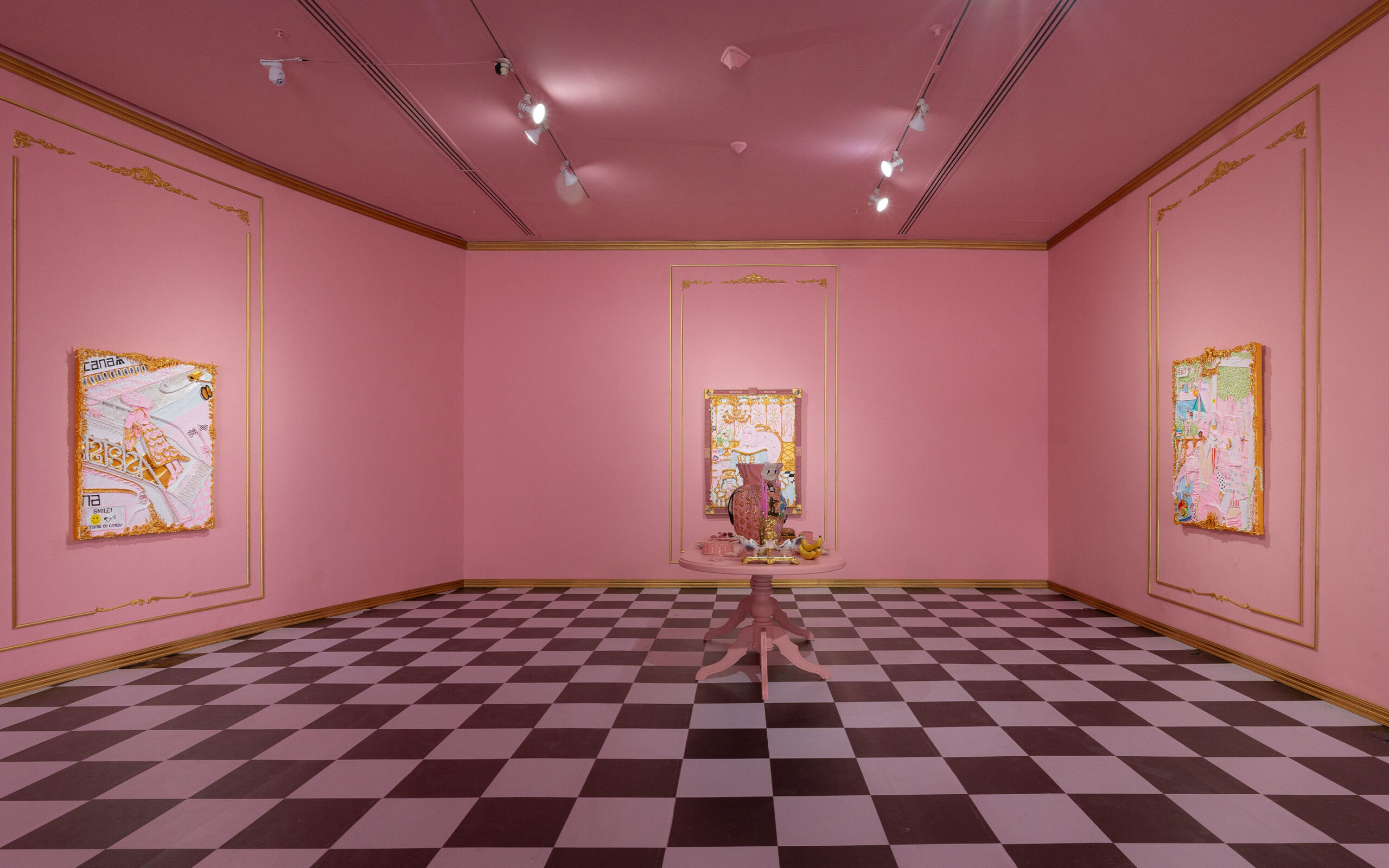
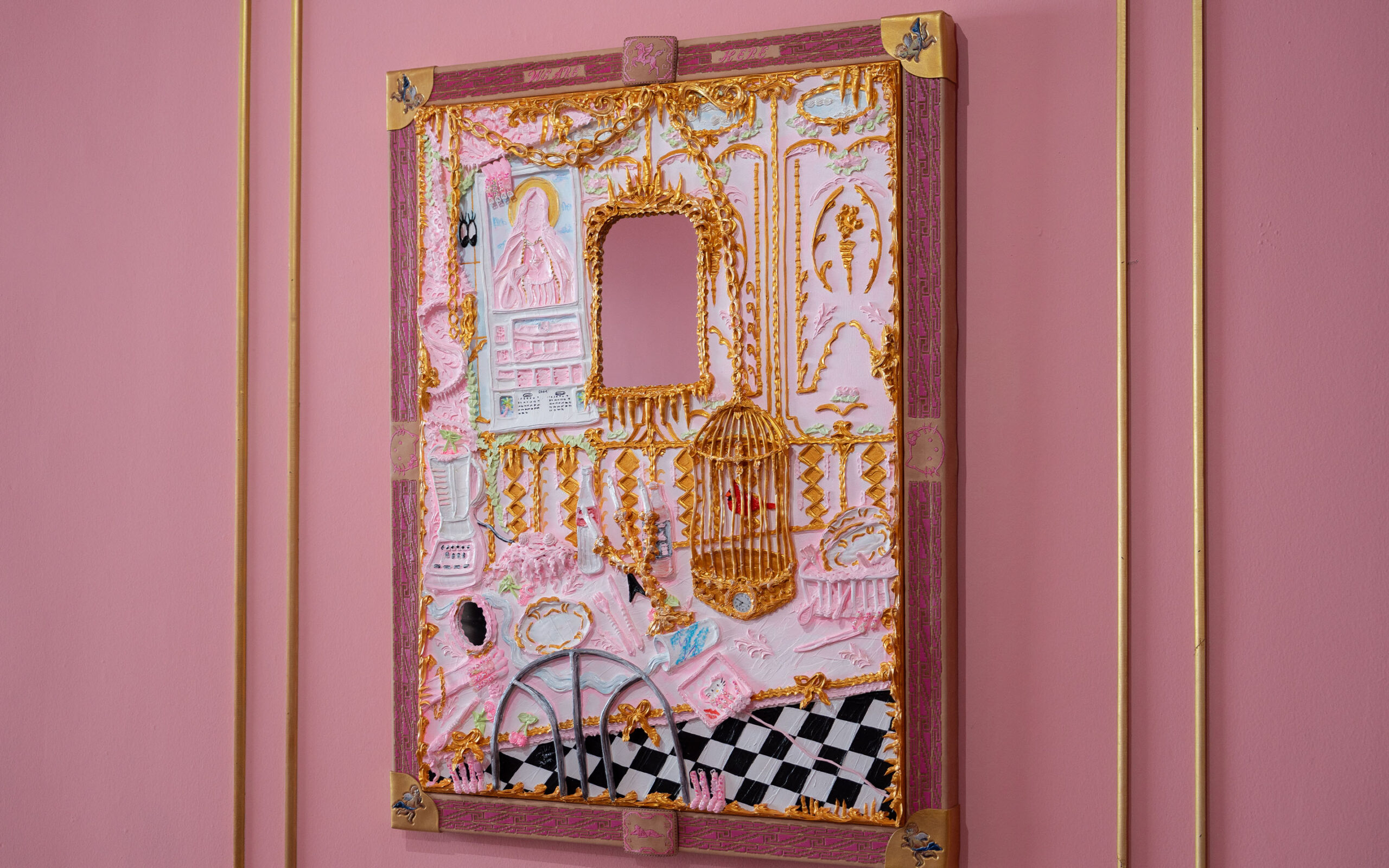
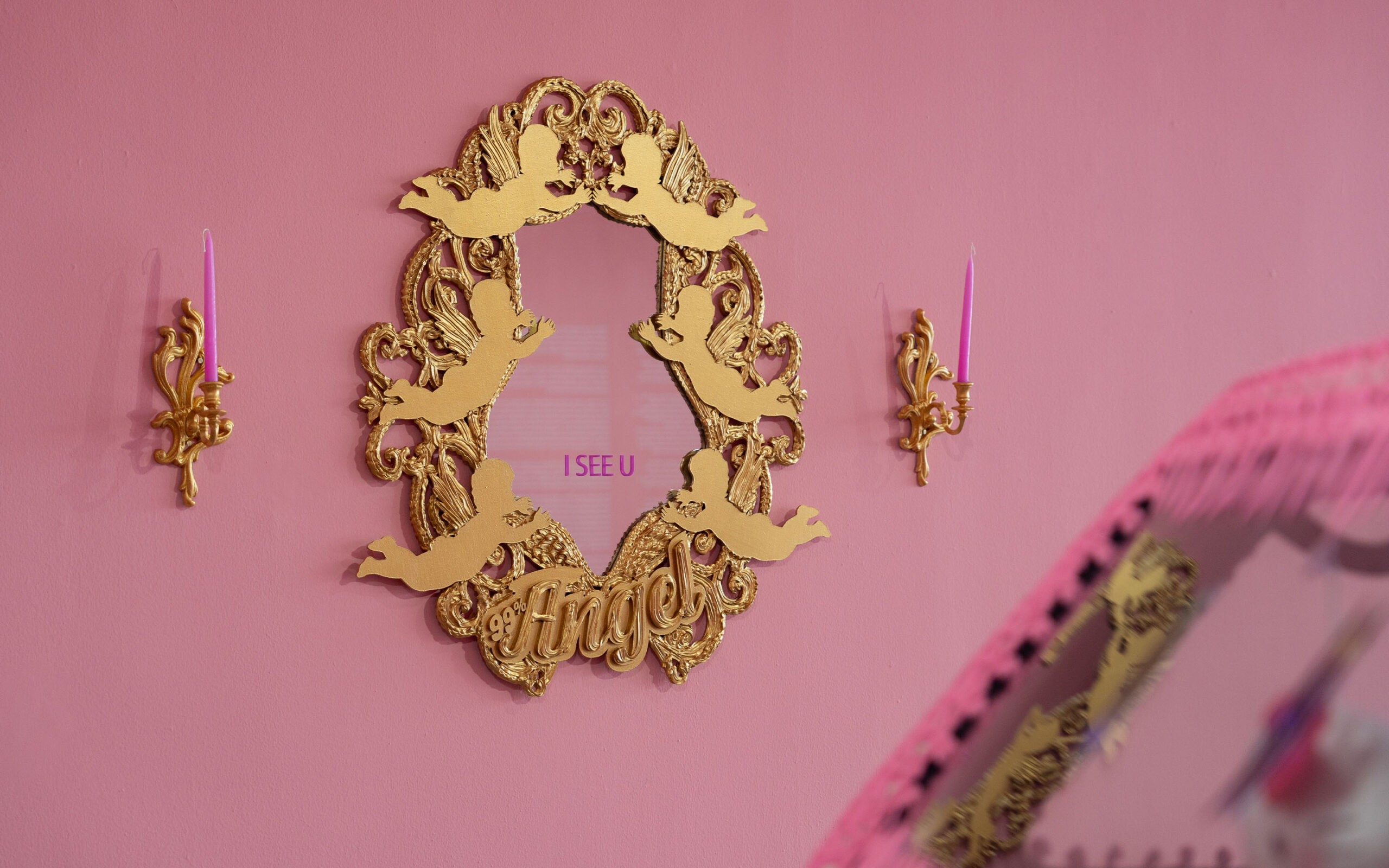


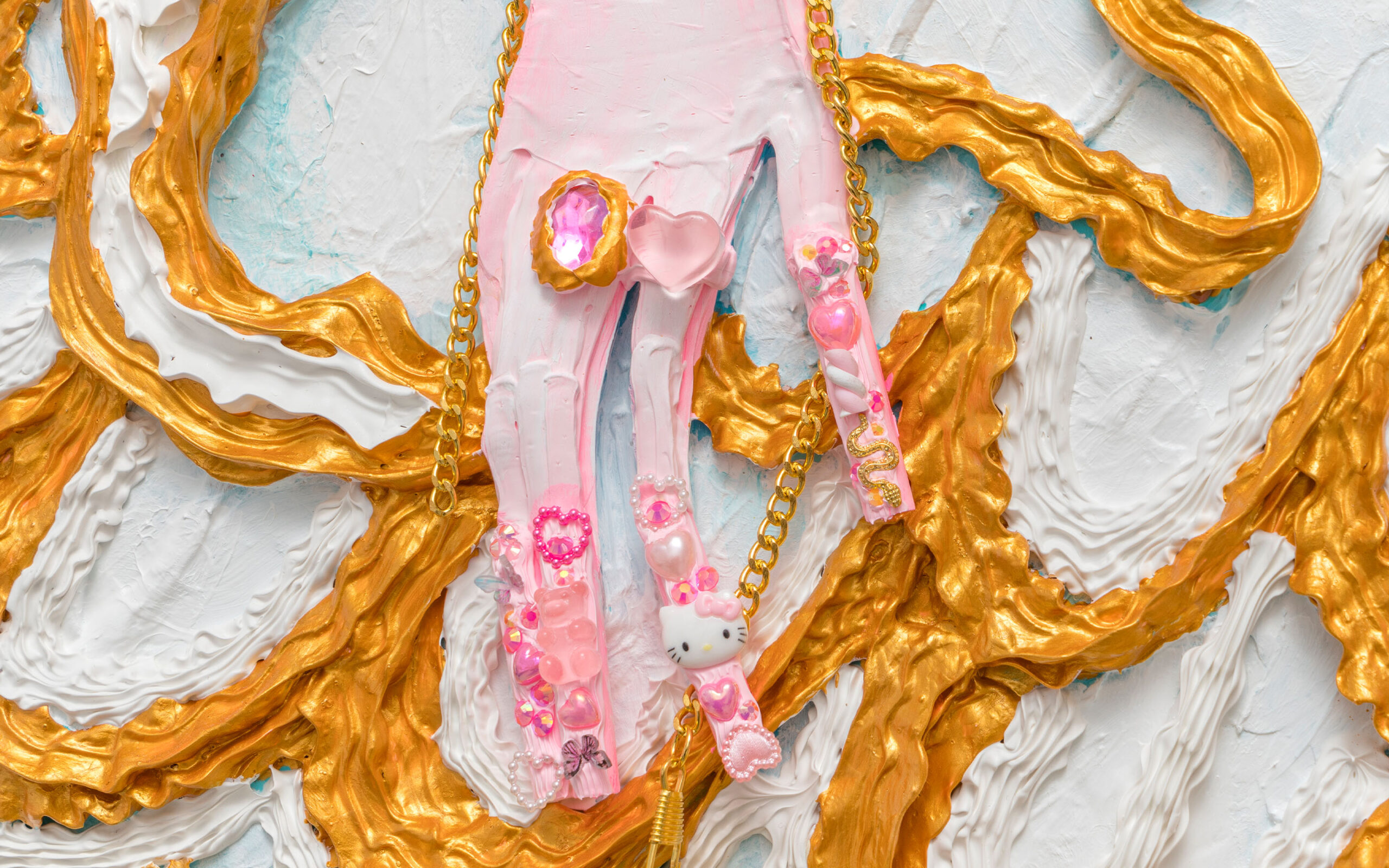
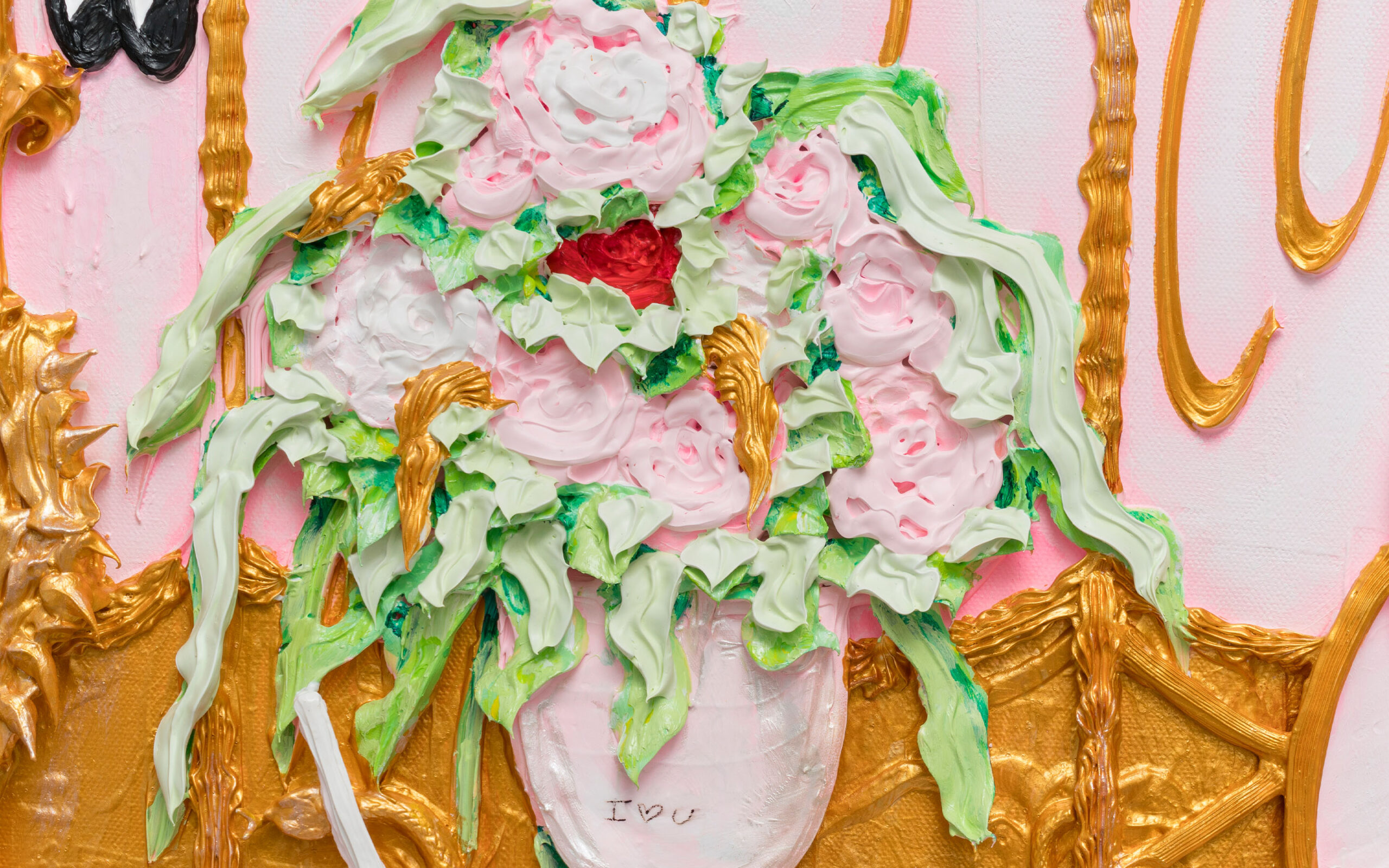
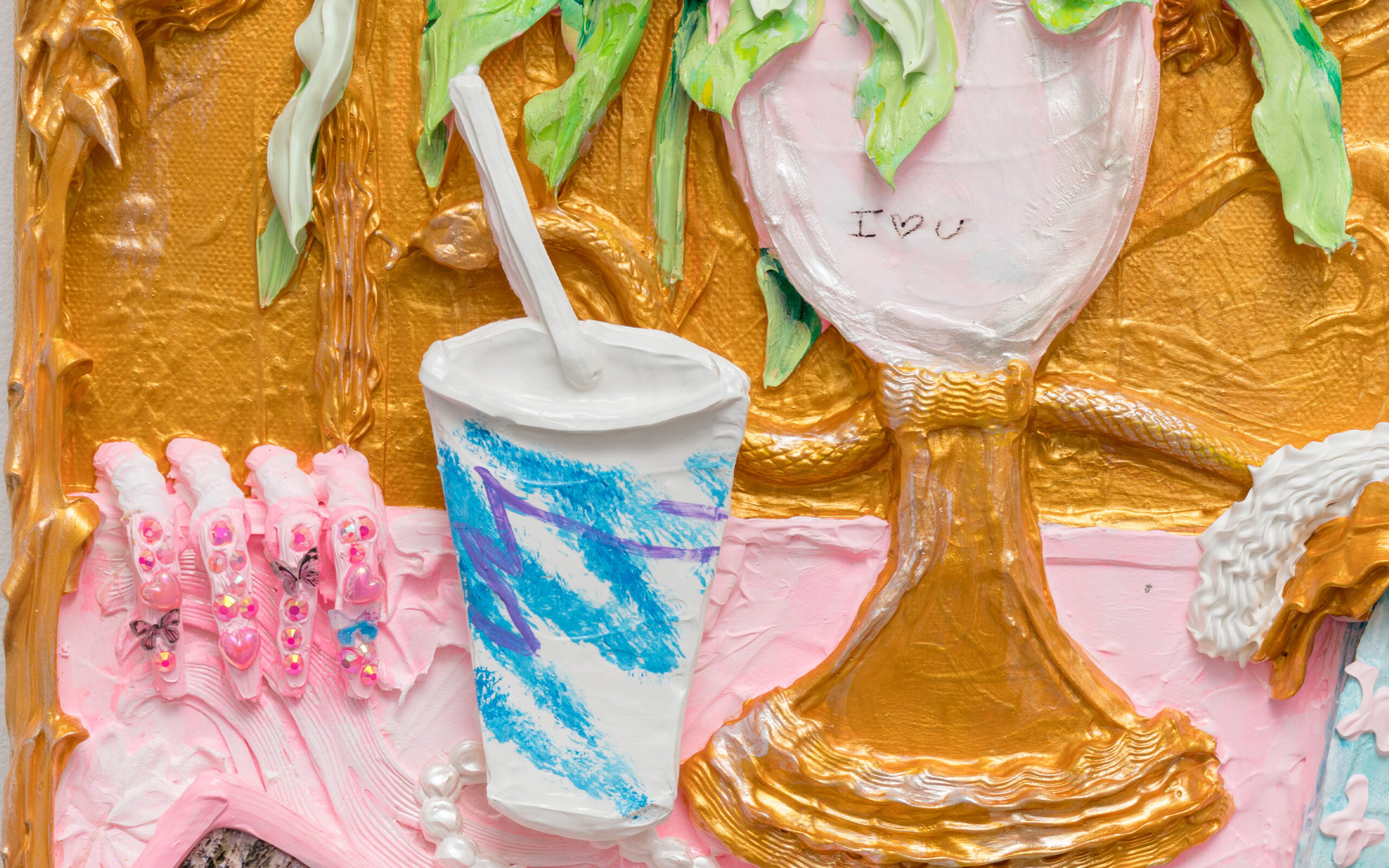
The Golden Cage | Yvette Mayorga
From August 3, 2024 to January 5, 2025
Curator: Maya Renée Escárcega
Lola Álvarez Bravo Gallery
It sounds from a distance Dreaming of You by Selena. A teenage girl, up late with her yearnings: all she has is “dreams of you.” The sound comes closer and the song changes to La jaula de oro by Los Tigres del Norte, a reminder that the dream wasn’t to go away, but to come back better. Pulling into the driveway, a station-wagon turns out to be the source of the music and announces its arrival: WE ARE HERE. But we already knew: the sign on the façade of the museum had tipped us off.
Yvette Mayorga presents an alternative world, one which is here and now in Mexico ―in her first individual exhibition outside of the United States―, but is also sweetened and artificial. A celebration in a Rococo hall, with works on the wall that examine issues of border control, vigilance, and work among the Latino diaspora in the United States.
As in a teenager’s bedroom, with its posters full of aspirations, emotions, and desires, Mayorga gathers together both images and found objects. From the cartoon character Tweety to Portrait of Doña Juana María Romero (1794) by New Spain painter Ignacio María Barreda, the artist reimagines family photos, combining the iconography of ’90s nostalgia with the aesthetic and the pictorial genres of the Baroque period in New Spain and France. A still life that captures a moment frozen in time from a ranch in Jalisco; a self-portrait that reformulates the colonial canons of representation; and genre paintings that depict travels and memories of growing up under the consumerism of Ronald McDonald, sustained by immigrant manpower. Mayorga’s Jaliscan ancestry is reflected in frames crafted with an artisanal technique that employs agave fiber embroidered on animal hides, in Hello Kitty decorative patterns.
Her work evokes the vital transitoriness of the memento mori and the ephemeral material riches of the vanitas: it is a celebration of the fleetingness of the present moment. In her pictorial world, the metaphorical figure of heaven is Mexico, and what will take you there is ICE (Immigration and Customs Enforcement). “F*CK ICE!” is hidden among the frosting. La princesa (Ride or Die) captures this ephemeral quality, the sensation of temporariness and impermanence: here today and gone tomorrow.
These paintings of abbreviated history follow Chicano aesthetic traditions like Rasquachismo and Domesticana, placing face-to-face, on the one hand, a bicultural working class sensibility that “on both sides of the border, […] retains an underclass perspective,”1 with its connotations of vulgarity, bad taste, and affectation, and on the other, a hegemonic Art History. Ever since the Enlightenment, with its sober, rational precepts (historically masculine and Apollonian), the Baroque has been used as a pejorative term for its exaggerated, ornamented, and whimsical forms (feminine and Dionysian). The same pejorative animus is manifest in contemporary versions that appropriate Camp and kitsch2 : nails with rhinestones, false eyelashes, gold chains, and visible logos of luxury brands like Louis Vuitton. In line with this, some feminisms that are neither intersectional nor decolonial demand more clothing and less pink.
Mayorga’s tool, the pastry bag, echoes the sign on the façade. WE ARE HERE: we women have always worked. The colonial discourse never considered racialized women “women,”3 ―stripping them of the “fragility” and “femininity” imposed on white women―, nor did it take into account the “work” they did. While white women had to struggle to become wage-earners in the capitalist system, colonized women were already there.
Maya Renée Escárcega
1 Tomás Ybarra-Frausto, “Rasquachismo: A Chicano Sensibility” (1989).
2 “Kitsch is appropriated while rasquachismo is acclaimed or affirmed.” —Amalia Mesa-Bains, “‘“Domesticana’”: The Sensibility of the Chicana Rasquache,” Aztlán 24:2 (Fall 1999).
3 María Lugones and Rita Laura Segato.
